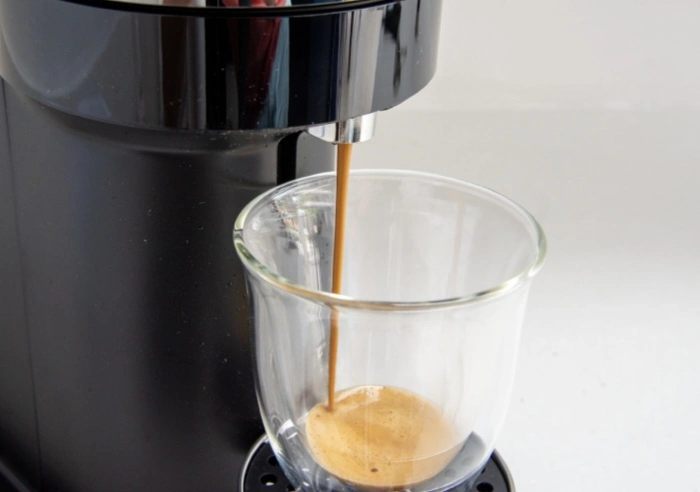Keeping your Nespresso machine in top condition ensures delicious coffee every time. Descaling is a crucial maintenance step that removes mineral buildup from hard water. This guide covers everything you need to know about using a descaler for your Nespresso machine, from preparation to post-descaling care.
Why Descaling Your Nespresso Machine Is Important
Over time, minerals like calcium and magnesium from water accumulate inside your coffee machine. This buildup can:
- Reduce heating efficiency – Slower heating means weaker espresso.
- Clog water pathways – Poor water flow affects extraction.
- Alter coffee taste – Mineral deposits may leave a metallic or bitter aftertaste.
- Shorten machine lifespan – Neglecting descaling can lead to costly repairs.
Nespresso recommends descaling every 3–6 months, depending on water hardness and usage frequency.
Signs Your Nespresso Machine Needs Descaling
Watch for these indicators:
- Slower brewing – If your machine takes longer to pull a shot.
- Unusual noises – Gurgling or grinding sounds suggest mineral blockages.
- Weak or inconsistent coffee – Poor pressure due to clogged components.
- Descaling alert – Some models (e.g., Vertuo, Expert) display a light or blink when descaling is due.
Choosing the Right Nespresso Descaler
Nespresso sells its official descaling kit, but other options work too:
- Nespresso-branded descaler – Specifically formulated for their machines.
- Citric acid-based descalers – A natural alternative (check machine compatibility).
- Vinegar (temporary fix) – Not ideal long-term; may leave an odor.
Avoid harsh chemicals—they can damage internal parts.
Preparing Your Nespresso Machine for Descaling
Follow these steps before starting:
- Empty the water tank – Discard any remaining water.
- Remove used capsules – Clear the capsule container.
- Heat the machine – Run a blank shot (without a capsule)to warm internal components.
- Check the drip tray – Ensure it’s empty to avoid overflow.
Step-by-Step Descaling Process
For OriginalLine Machines (Pixie, Essenza, Citiz)
- Fill the tank – Mix 500ml warm water with the descaler.
- Start descaling mode – Hold both buttons for 3 seconds until lights blink.
- Run the solution – Let hot water flow into the cup, then pause 5 minutes.
- Rinse thoroughly – Refill with clean water and flush twice.
For VertuoLine Machines (Vertuo Plus, Evoluo)
- Add descaler solution – Fill the tank with the mixture.
- Enter descaling mode – Press the button 3 times rapidly.
- Begin the cycle – Let the machine pump out the solution.
- Rinse twice – Repeat with fresh water to remove residue.
For Manual Machines (without auto-descaling)
- Run descaler through – Brew until the tank is empty.
- Let it sit – Wait 15–20 minutes for deposits to dissolve.
- Flush repeatedly – Use at least 2 full tanks of clean water.
Post-Descaling Care
After descaling:
- Wipe exterior surfaces – Use a damp cloth to clean the machine.
- Check for leaks – Ensure all parts are reassembled correctly.
- Run a test shot – Brew a blank shot to confirm no descaler taste remains.
Common Descaling Mistakes to Avoid
- Using vinegar too often – Can degrade rubber seals.
- Skipping rinsing – Leftover descaler affects flavor.
- Ignoring the manual – Some models have specific steps.
- Descaling too rarely – Buildup becomes harder to remove over time.
Maintaining Your Nespresso Machine Between Descalings
Extend your machine’s life with these habits:
- Use filtered water – Reduces mineral content.
- Clean regularly – Wipe the capsule holder and drip tray weekly.
- Descale on schedule – Mark your calendar for every 3–6 months.
Troubleshooting Descaling Issues
Machine Won’t Enter Descaling Mode
- Check if your model supports auto-descaling.
- Reset the machine (unplug for 10 seconds).
Descaler Taste Lingers
- Rinse with fresh water 2–3 more times.
- Brew 1–2 blank shots to clear residue.
Machine Still Slow After Descaling
- Repeat the process—stubborn buildup may need a second round.
- Contact Nespresso support if issues persist.
FAQs About Nespresso Descaling
How often should I descale?
Every 3–6 months, or when the machine alerts you.
Can I use lemon juice instead of descaler?
Occasionally, but citric acid is more effective.
Why does my machine blink after descaling?
Some models require a reset—consult the manual.
Is descaling the same as cleaning?
No—cleaning removes coffee oils; descaling tackles mineral deposits.
Conclusion
Descaling your Nespresso machine is simple but essential. By following these steps, you’ll maintain peak performance and enjoy better-tasting coffee. Stick to a regular schedule, use the right descaler, and your machine will thank you with years of perfect brews.
For more tips, check Nespresso’s official guides or consult a coffee technician if problems arise. Happy brewing!
Related topics:
Nespresso Cold Brew Vertuo: A Revolution in Coffee Enjoyment
How Many Shots of Espresso Are in a Latte
How to Make Good Espresso with a Stovetop


